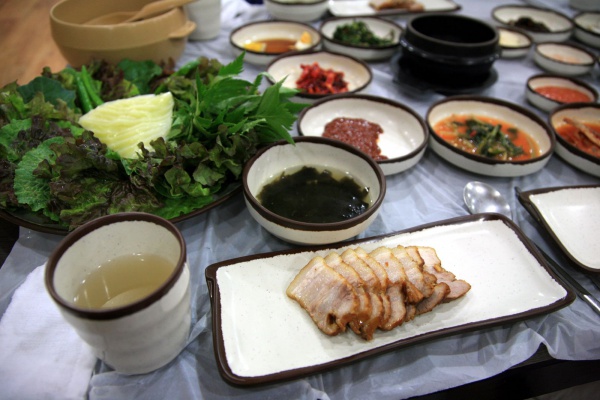Facts About Bossam
Bossam is a cherished pork dish in Korean cuisine, revered for its flavorful and tender slices of boiled pork shoulder. The meat is typically cooked with an array of spices, sliced thinly, and served alongside a variety of complementary side dishes. These often include spicy radish salad, sliced raw garlic, ssamjang (a thick, spicy paste), saeu-jeot (fermented shrimp), kimchi, and an assortment of vegetables such as lettuce, perilla leaves (kkaennip), and napa cabbage leaves. The name "bossam" which means "wrapped" or "packaged" reflects the traditional way of eating the dish by wrapping the meat and sides in leafy vegetables.
Bossam holds a special place in Korean culture, particularly during the gimjang season, which is the traditional period for making large batches of kimchi to last through the winter. Historically, during gimjang, the scholar-gentry class, known as yangban, would provide a pig to motivate workers. The freshly made kimchi paired perfectly with the tender, boiled pork, creating a hearty and satisfying meal.
Pork shoulder is the preferred cut for making bossam, though pork belly can also be used for a richer flavor. The meat is often tied with kitchen twine to maintain its shape while boiling. It is then cooked in a broth infused with various spices to enhance its flavor. Once cooked, the meat is cooled, sliced thinly, and served with a range of sides, including spicy radish salad and napa cabbage kimchi. When raw oysters are added to the mix, the dish is referred to as gul-bossam.
Bossam is a versatile dish, often enjoyed as anju, which means it is commonly served with alcoholic beverages, making it a favorite for social gatherings and celebrations. Whether you wrap the pork in lettuce or napa cabbage, each bite offers a delicious blend of textures and flavors.

 North Korea
North Korea